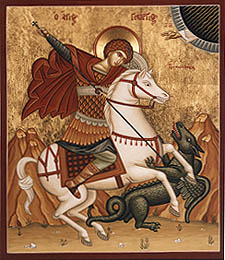This is a sermon I preached at the 2019 Ancient Evangelical Future Conference at Trinity School for Ministry.
Luke 20:27-21:4
 This morning’s lectionary reading from Luke’s gospel consists of a number of stories about conflict between Jesus and different opponents. Each one of these could be the subject of a sermon in itself. In Cyril of Alexandria’s Commentary on Luke, Cyril preaches three different sermons on what for us this morning is a single reading. I don’t have time to preach three sermons, but I don’t intend to focus on only one of the conflicts in which Jesus is involved in this passage either. Instead, I want to focus on the issue of conflict itself. Each one of the conflicts in which Jesus is engaged is essentially about a theological disagreement, and I am going to suggest that in this morning’s lectionary reading, Jesus provides an ideal example of how to deal with theological disagreement. We live in a culture that does not handle conflict very well, but, more to the point, this is a theological conference in which Christians of different theological traditions are gathered, so there are certainly issues of theological disagreement among us. Yet, this is also an ecumenical conference, in which, despite not agreeing on everything, we presumably believe that we agree enough on some things that we can meet together both to engage in mutually beneficial discussion and to worship. So how does Jesus address theological conflict in these stories?
This morning’s lectionary reading from Luke’s gospel consists of a number of stories about conflict between Jesus and different opponents. Each one of these could be the subject of a sermon in itself. In Cyril of Alexandria’s Commentary on Luke, Cyril preaches three different sermons on what for us this morning is a single reading. I don’t have time to preach three sermons, but I don’t intend to focus on only one of the conflicts in which Jesus is involved in this passage either. Instead, I want to focus on the issue of conflict itself. Each one of the conflicts in which Jesus is engaged is essentially about a theological disagreement, and I am going to suggest that in this morning’s lectionary reading, Jesus provides an ideal example of how to deal with theological disagreement. We live in a culture that does not handle conflict very well, but, more to the point, this is a theological conference in which Christians of different theological traditions are gathered, so there are certainly issues of theological disagreement among us. Yet, this is also an ecumenical conference, in which, despite not agreeing on everything, we presumably believe that we agree enough on some things that we can meet together both to engage in mutually beneficial discussion and to worship. So how does Jesus address theological conflict in these stories?
In the first conflict story, Jesus encounters some Sadducees, a Jewish group who disagreed with the Pharisees in that they did not believe in the resurrection of the dead. Jesus’ Sadducee opponents engage in a reductio ad absurdum argument. They try to discredit the notion of resurrection by showing that if taken to its logical extreme, resurrection would lead to absurd results. They tell the story of a woman whose husband dies. Under the principle of levirate marriage, found in Deuteronomy 25, the brother of a man who had died was obligated to marry his brother’s widow in order that the man would not have died without heirs, but also as a form of financial security for the widow. The central plot of the book of Ruth in the Old Testament revolves around this practice. As the Sadducees tell the story, the woman marries the surviving brother, but he dies as well. The widow keeps marrying brothers, all of whom die, and then finally she dies. This leads to a question with all of the sophistication of a social media debate: If there is a resurrection, out of the seven brothers, whose wife would the woman be?
So how does Jesus address the conflict? (more…)


